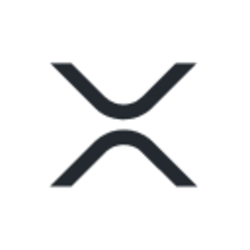- Ripple’s CTO, David Schwartz, argues that tokenization improves efficiency in asset transfer and ownership issues.
- He believes this simplification extends to financial activities like borrowing against an asset.
- Schwartz forecasted that XRPL would become a preferred platform for tokenization by 2025.
Discover how Ripple’s CTO envisions tokenization revolutionizing asset management and why XRPL is poised to lead this transformation by 2025.
Tokenization: A Game Changer in Asset Management
In a recent episode of Ripple’s “Crypto in One Minute” series, the company’s CTO, David Schwartz, unpacked the transformative potential of tokenizing traditional assets with blockchain technology. Schwartz began by referencing Albert Einstein’s adage that a true grasp of a concept is evident in the ability to explain it concisely. He then embarked on a mission to condense the complexities of blockchain tokenization into a bite-sized explanation.
Streamlining Asset Transfer and Ownership
Schwartz emphasized that tokenization can streamline processes by tackling challenges in asset transfer and ownership. He used the cumbersome process of buying a house as an illustration, noting that the current system is fraught with difficulties in verifying ownership, managing reams of paperwork, and recording the sale. Moreover, there are inherent risks of fraud in payment delivery and proving ownership.
In contrast, the Ripple executive posited that tokenization can mitigate these issues by leveraging digitally distributed ledgers to track asset ownership. He further elaborated that this simplification extends to financial activities like borrowing against an asset. Essentially, with tokenization, lenders can more readily verify that the borrower truly owns the asset and ensure that it is not being used as collateral for multiple loans simultaneously.
The Advantages of XRPL for Tokenization
In an interview last year following his presentation at the Apex 2023 developer summit, Schwartz expounded on the advantages of using the XRP Ledger (XRPL) for tokenizing real-world assets. He underscored the platform’s low transaction costs and seamless integration with decentralized exchanges as key benefits.
Future Prospects and Predictions
Consequently, the Ripple CTO predicted that within the next year and a half, or by 2025, the XRPL could emerge as a favored platform for issuing tokenized assets. Ripple’s CTO David Schwartz has distilled the significance of tokenization with blockchain, such as the XRP Ledger, for traditional assets.
Conclusion
Tokenization, as articulated by David Schwartz, holds the promise of revolutionizing asset management by making processes more efficient and secure. With the XRP Ledger’s low transaction costs and integration capabilities, it is well-positioned to become a leading platform for tokenized assets by 2025. This evolution could significantly impact how assets are managed, transferred, and utilized in financial activities, offering a glimpse into a more streamlined and secure future for asset management.
